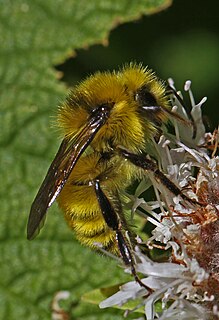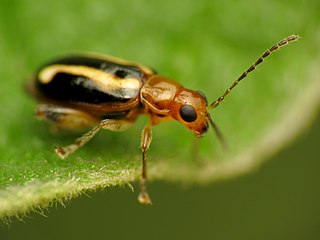
Van Dyke's salamander is a small woodland salamander in the family Plethodontidae, the lungless salamanders. These animals breathe through their skin and are largely terrestrial. Compared to other salamanders in Plethodon it is relatively stocky with long legs. Usually associated with streams, seepages, and rock outcrops, it is endemic to Washington where it is found in a limited number of small, isolated populations.
The Coeur d'Alene salamander is a species of woodland salamander (Plethodon) in the family of lungless salamanders (Plethodontidae) found in northern Idaho, western Montana, and southeastern British Columbia. This species was discovered in 1939 by James R. Slater and John W. Slipp on the south shore of Lake Coeur d'Alene in northern Idaho. It was once considered to be a subspecies of Van Dyke's salamander, as P. vandykei idahoensis, but appears to be a distinct and separate species as originally suggested by Slater and Slipp (1940).
Cymatodera vandykei is a species of checkered beetles in the family Cleridae. It is found in North America.

Bombus vandykei, the Van Dyke's bumble bee, is a species of bumble bees in the family Apidae. It is found in North America.
Diaulota is a genus of rove beetles in the family Staphylinidae. There are about eight described species in Diaulota.
Platidiolus vandykei is a species of ground beetle in the family Carabidae. It is found in North America.

Gnathium is a genus of blister beetles in the family Meloidae. There are about 16 described species in Gnathium.

Trapezonotus is a genus of dirt-colored seed bugs in the family Rhyparochromidae. There are about 19 described species in Trapezonotus.
Neochthebius vandykei is a species of minute moss beetle in the family Hydraenidae. It is found in North America.
Neochthebius is a genus of minute moss beetles in the family Hydraenidae. There are at least two described species in Neochthebius.
Cephaloon vandykei is a species of false longhorn beetle in the family Stenotrachelidae. It is found in North America.

Synetocephalus is a genus of skeletonizing leaf beetles in the family Chrysomelidae. There are about 10 described species in Synetocephalus. They are found in North America.
Synetocephalus vandykei is a species of skeletonizing leaf beetle in the family Chrysomelidae. It is found in North America.
Diradius is a genus of webspinners in the family Teratembiidae. There are about 15 described species in Diradius.

Trichopepla is a genus of stink bugs in the family Pentatomidae. There are about six described species in Trichopepla.
Diplotaxis vandykei is a species of scarab beetle in the family Scarabaeidae. It is found in North America.
Myrmex vandykei is a species of antlike weevil in the beetle family Curculionidae. It is found in North America.
Pleocoma hirticollis is a species of rain beetle in the family Pleocomidae. It is found in North America.
Cophura vandykei is a species of robber flies in the family Asilidae.
Martineziana is a genus of aphodiine dung beetles in the family Scarabaeidae. There are about six described species in Martineziana.






